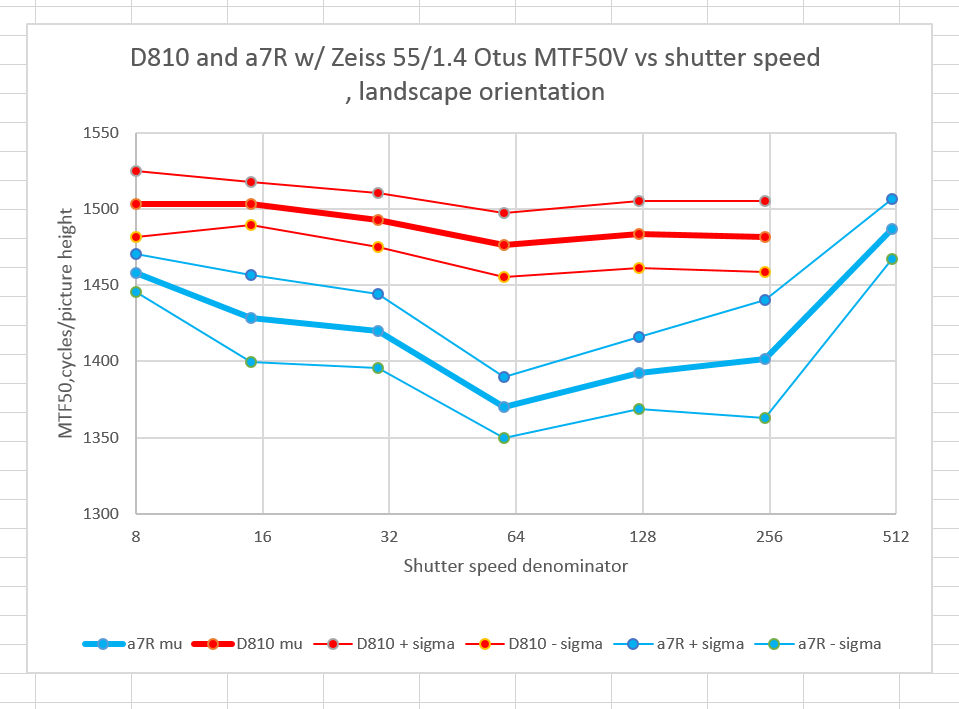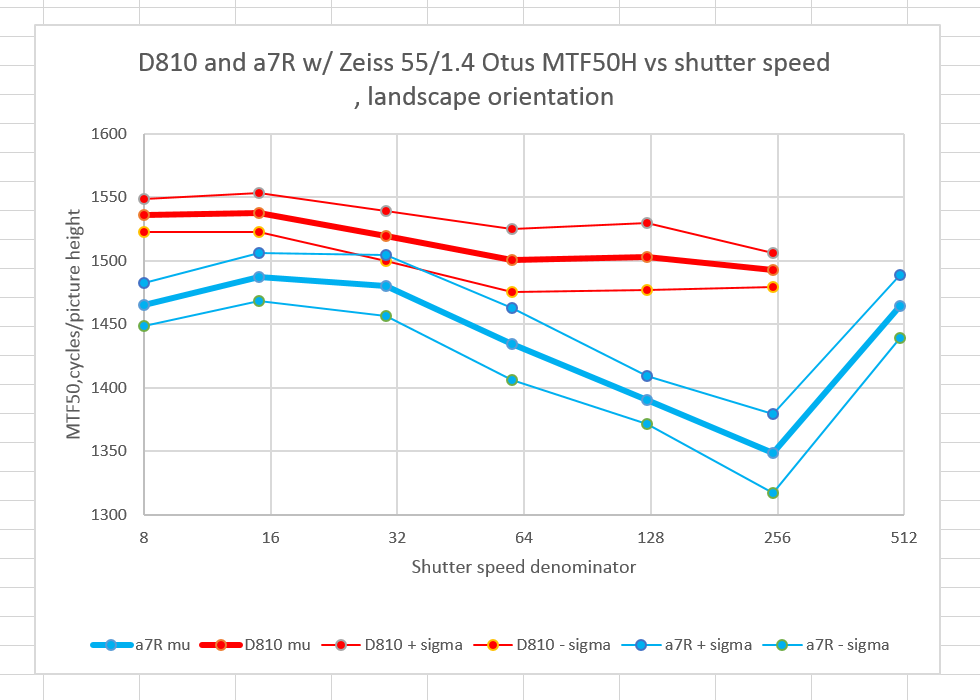We saw in the preceding post that, once we deep-sixed Lightroom’s capricious sharpening, the a7R and the D810 offered similar resolution (as measured by MTF50) in one direction and that the D810 did somewhat better in the other, when the target was illuminated with electronic flash, and we used trailing curtain synch on the a7R and EFCS on the D810.
What about with a continuous light source? I performed the following tests:
I set up a D810 in landscape orientation using a RRS L-bracket on an Arca Swiss C1 cube head attached to a set of RRS TVC-43 legs. I mounted a Zeiss 55mm f/1.4 Otus.
- The lighting: a single Fotodiox 5500 degree Kelvin variable output LED flood. The room was darkened otherwise, except for focusing.
- ISO set to 100, f-stop set to f/4.
- Focusing manually at f/1.4, using the magnifier. The focus point is a Siemens star on an Imatest slanted-edge target.
- Shutter delay set to 3 seconds
- EFCS on, dial to Mup
- Fotodiox flood to full, shutter to 1/500 second, make 16 exposures, turn the flood down a stop, make the shutter speed a stop slower, make 16 exposures… until you get to 1/8 second.
- Mount the lens on an a7R.
- Clip the a7R into the head using a RRS L-bracket.
- Set the self-timer on the a7R to 2 seconds.
- Repeat the series.
- Develop in DCRAW with AHD demosacing.
- Crop and analyze for horizontal edge and vertical edge MTF50 in Imatest.
- Export the results to Excel, crunch the stats, and graph.
Here’s what I got for the vertical slanted edge:
For some reason I didn’t get the 1/500 second images from the D810. User error with the intervalometer?
The solid lines are the average of the MTF50 values for the 16 exposures, measures in cycles per picture height. The light lines are the averages plus and minus one standard deviation.
It looks like maybe if I had the 1/500 second D810 data point, the a7R and D810 numbers would be pretty close. I’ll have to run some more tests.
If we look at the horizontal slanted edge, here’s what we see:
Note that 1/250 is the worst shutter speed for the a7R; that’s the peculiar high-speed a7R shutter shock at work.
More tests coming up.


Leave a Reply